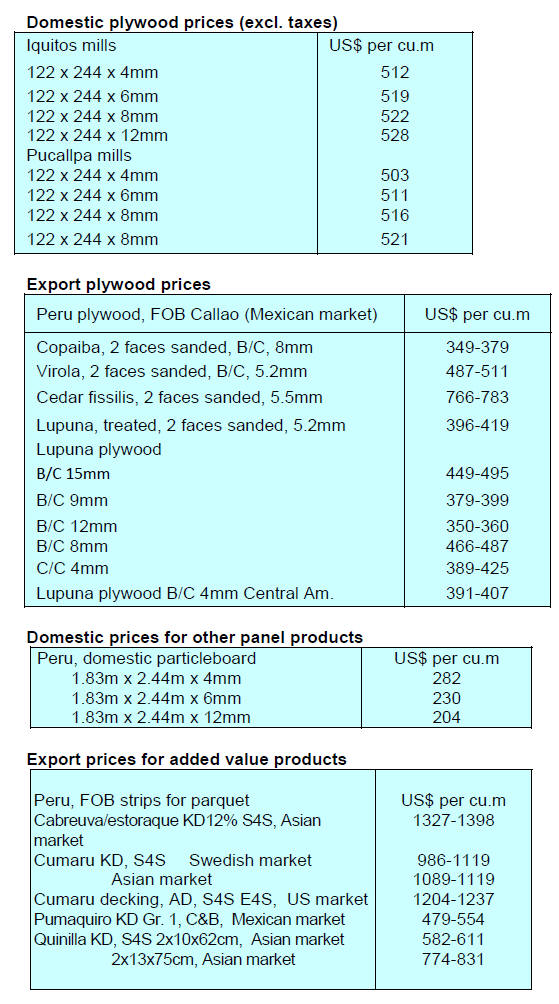4.
INDONESIA
Business Forum at Expo 2020
The Ministry of Environment and Forestry (KLHK) held a
business forum "Investment and the Development of
Forestry Multi-Businesses in Indonesia" and "The
Potential and Opportunities for Investment in Trading of
Forestry Products" in Dubai.
The Director General of Sustainable Forest Management,
KLHK, Agus Justianto, said that this business forum was
expected to open up opportunities and increase interest in
the Indonesian forestry and timber sectors. Agus said that
the government is expecting a 2% increase in export
earnings from the two sectors this year.
At the two events the Ministry of Environment and
Forestry introduced 12 types of Indonesian tropical woods
for export including benuang (Octomeles sumatrana Miq),
bintangur (Calophyllum spp), duabanga (Duabanga
moluccana), jabon (Antochepalus spp), matoa (Pometia
pinnata), nyatoh (Palaquium spp), nyawai (Ficus variegata
Blume), resak (Vatica spp), samama (Anthocephalus
macrophyllus), sindur (Sindora spp), gerogong and
medang (Litsea firma).
See:
https://infopublik.id/kategori/nasional-ekonomibisnis/573051/indonesia-buka-peluang-pasar-produk-kehutanandi-expo-2020-dubai
Furniture SMEs assisted with marketing to the UAE
Small and medium enterprises (SMEs) assisted by the
Ministry of Trade are participating in an Export Coaching
Programme and one SME from Semarang, Central Java
has successfully expanding furniture exports to the United
Arab Emirates (UAE).
The Director General of National Export Development at
the Ministry of Trade, Didi Sumedi, said in a statement
"Despite facing restrictions due to the ongoing pandemic,
the number of new export players is increasing. We
congratulate this company for successfully exporting to
the United Arab Emirates”. The UAE is a non-traditional
market for Indonesia but can be important as it is a hub to
enter other Middle East regions.
See:
https://www.antaranews.com/berita/2462557/ukm-binaankemendag-perluas-pasar-ekspor-furnitur-ke-uni-emirat-arab
Furniture and Craft SMEs encouraged to export
Chairman of the Indonesian Furniture and Craft Industry
Association (HIMKI), Abdul Sobur, said the Association
supports furniture and craft SMEs with exporting
emphasizing that the export market is not only for large
companies but can also be penetrated by the furniture and
craft SMEs.
He added that Indonesia has abundant raw materials for
the manufacture of wood products along with many skilled
craftsmen so this industry can become a formidable
exporter.
See:https://www.medcom.id/ekonomi/bisnis/9K5QLMPK-ukmmebel-dan-kerajinan-digenjot-tembus-pasar-ekspor
Businesses committed to sustainable peat
management
Forestry and plantation businesses in Indonesia are
committed to implementing best practices by applying
research and development results to ensure that peatlands
can be managed sustainably. Chairman of the Association
of Indonesian Forest Concessionaires (APHI) Indroyono
Soesilo said the challenges faced in peat management
include water and carbon stocks, subsidence and fire
prevention.
According to Indroyono the application of best practices
for peat management is expected to support the
availability of wood raw materials to supply the industries
in the country.
See:
https://industri.kontan.co.id/news/pengusaha-hutan-klaimmanfaatkan-hasil-litbang-untuk-kelola-lahan-gambut
Economic recovery continues
Indonesia's exports as of September 2021 reached
US$20.60 billion, according to Statistics Indonesia (BPS)
data. Meanwhile, the country's imports in September 2021
were valued at $16.23 billion indicating a surplus trade
balance in September 2021 marking the 17th successive
monthly surplus.
However, Indonesia's trade also experienced a deficit with
several countries the largest being with Australia,
US$529.7 million; Thailand, US$346.8 million and
Ukraine, US$247.2 million.
See:
https://en.antaranews.com/news/195673/economicrecovery-in-indonesia-continues-as-optimism-remains-high

5.
MYANMAR
Poverty, unrest and economic crisis
The World Food Programme Myanmar Country Director,
Stephen Anderson, has said the triple impact of poverty,
political unrest and the economic crisis coupled with the
rapidly spreading third wave of covid-19 the people of
Myanmar are “experiencing the most difficult times of
their lives”.
In related news, Noeleen Heyzer a former United Nations
Under-Secretary-General who had a working relationship
with Myanmar’s previous military regime has been
appointed as the new UN Special Envoy for Myanmar.
The 73 year old Singaporean succeeds Christine Schraner
Burgener.
Covid update
As of October 19, a total of more than 16 million COVID-
19 vaccines have been vaccinated in Myanmar, according
to the Ministry of Health. The ministry says 24 million
Sinopharm vaccines have been purchased from China and
12 million people with the ages between 40 and 64 will
receive the vaccine this year. The ministry said it was also
working to increase the number of vaccines available and
to coordinate the purchase of vaccines.
See:
https://elevenmyanmar.com/news/myanmar-receives-over-16-m-jabs-of-covid-19-vaccine-till-oct-19
)
ASEAN annual meeting without Myanmar
The annual ASEAN summit began on 26 October without
a representative from Myanmar after a decision to bar Min
Aung Hlaing from attending. Cambodian Prime Minister
Hun Sen, the next ASEAN chairperson said “Today,
ASEAN did not expel Myanmar from the ASEAN
framework, Myanmar abandoned its right.”
See:
https://www.irrawaddy.com/news/burma/asean-leadersvoice-disappointment-at-myanmar-junta-as-summit-proceedswithout-it.html
)
Myanmar’s border trade
The Ministry of Commerce has reported Myanmar’s trade
with neighbouring countries through land borders reached
over US$135 million in the current financial year to 15
October. Export via border gates amounted to US$60
million while its import were US$75 million. Myawady
was the main border trade point followed by Kawthoung.
According to the Ministry of Commerce the value of
timber traded through land borders was US$2.5 mil. in
2018-19, US$3.93 mil. in 2019-20 and US$4.2 mil. for the
ten months of the 2020-21 year.
See:
https://www.gnlm.com.mm/myanmars-border-tradereaches-over-135-mln-in-mini-budget-year/
)
Adani Ports pulls out
India's Adani Ports has pulled out of a plan to build a
container terminal in Myanmar. Last year Adani won the
bid to build and operate Yangon International Terminal
which it has said is an independent project fully owned
and developed by the company.
See:
https://www.reuters.com/world/india/adani-ports-sayscould-abandon-myanmar-project-if-found-violate-us-sanctions-2021-05-04
of U.S. sanctions.
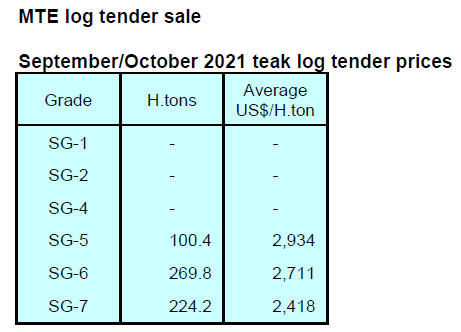
6. INDIA
Optimistic view on covid situation
A panel of leading scientists appointed by the Indian
government writing in the Indian Journal of Medical
Research said India has rounded the corner as the number
of daily new covid-19 cases has almost halved the past six
weeks. They point to a new mathematical model which
suggests herd immunity has been achieved.
But other scientists say this model overestimates the
number of people infected and warn that with colder
temperatures India may well see a further wave of
infections.
Consumer confidence slowly recovering
Consumer Confidence of Urban Indians improved in
October according to the Refinitiv-Ipsos India Primary
Consumer Sentiment Index (PCSI). Amit Adarkar, CEO of
Ipsos India writes on the company website “Consumer
Confidence has improved in October and notably in the
two key areas of personal finances and investments for the
future.
This augurs well for the festival season as consumers do
not feel strapped for funds to splurge and enjoy the festival
time. Confidence around the economy has seen a minor
uptick and it’s understandable as the economy will take a
longer time to repair and recover, due to the long-term
impact of the pandemic.
Confidence in employment opportunities is, however,
downbeat and thisneeds special focus both by the
goverment and the private sector as improved job outlook
is critical to sustainability of demand.”
See:
https://www.ipsos.com/en-in/consumer-confidence-furtherimproves-october-2021-refinitiv-ipsos-india-pcsi
Rising demand for furniture
A report by Pricewaterhouse in collaboration with IKEA
shows that as the Indian economy recovers from the
impact of COVID-19 furniture demand is rising. In the
five years up to 2019 furniture consumption was growing
close to 10% annually.
This growth was fueled by increasing urbanisation, a large
and young population and expanded middle class with
rising levels of disposable income as well as a strong
hospitality sector. However, the report also points out that
if the furniture sector is to regain its growth momentum
post COVID some serious limitations need to be
addressed.
See:
https://www.cnbctv18.com/business/india-has-potential-oftaking-furniture-exports-from-2-to-20-billion-says-expert-11017162.htm
Changes to GST being discussed
The Ministry of Finance is reportedly convening a panel to
discuss possible changes to the Goods and Services Tax
(GST). India currently taxes good and services produced
in the country at 5%, 12%, 18% and 28%, with some
essentials such as food items attracting the lowest rate and
luxury goods the highest. Wood products generally attract
an 18% GST.
The local media suggest the tax on some items may be
increased and the structure of the GST will be simplified.
See:
https://auto.economictimes.indiatimes.com/news/industry/indiamay-consider-higher-gst-and-fewer-rates/86958521
Teak logs and sawnwood
The high cost of ocean freight has caused some teak log
and sawnwood importers to ask producers to delay
shipments.
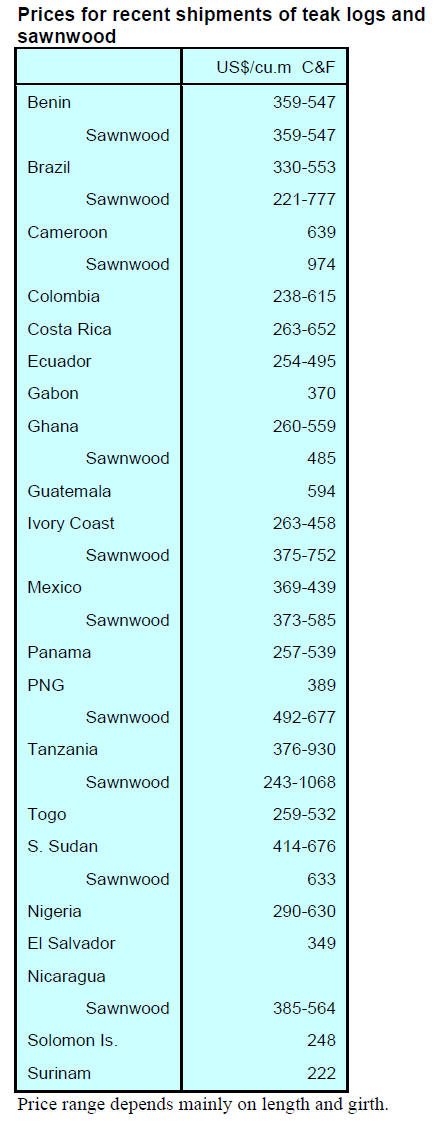

Plywood mills in the North face many
challenges
Plyreporter has a news item describing the situation in the
plywood industries in Northern India. The Plyreporter
article says manufacturers face many challenges such as
rising log prices, a decline in log quality, a slack market
along with poor payment recovery among others.
Industry analysts, says Plyreporter, think the plywood
industry in North will be facing additional challenges as
new capacity in Uttar Pradesh and South India comes on
line.
See:
https://www.plyreporter.com/tag/plywood-industries-innorth-india

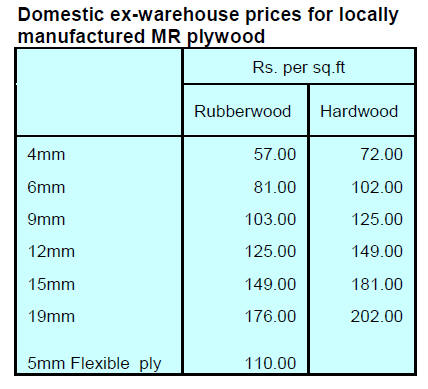
7.
VIETNAM
Despite Covid W&WP exports one of the fastest
growing sectors
The latest outbreak of the Covid-19 heavily disrupted
many export-oriented industries of Vietnam, including
wood industry. W&WP exports, therefore, declined in the
last 3 months. However, in the first 9 months of 2021
W&WP exports remained one of the fastest-growing
industries, significantly contributing to the growth rate of
Vietnam’s goods production and exports.
With the pandemic now under control wood processing
enterprises are endeavoring to restore supply chains
effectively capturing market opportunities to boost
production and export of W&WP in the last months of
2021.
The accumulated W&WP exports from the beginning of
the year to October 15, 2021 accounted for US$11.5
million, up 27% over the same period in 2020. In
particular, exports of WP contributed US$8.7 billion, up
26% over the same period in 2020. Vietnam’s W&WP
export turnover of 2021 is forecasted to total at US$14
billion, year-on-year up by 13%.
Latest trade highlights
W&WP exports in the first 15 days of October 2021
reached US$397 million, up 29% compared to the first 15
days of September 2021, but down 33% compared to the
first 15 days of October 2020.
In particular, exports of WP reached US$258 million, up
41% compared to the first 15 days of September 2021 but
down 63% compared to the first 15 days of October 2020.
The accumulated W&WP export from the beginning of the
year to October 15, 2021 reached US$11.5 billion. The
export of high value-added groups of wood products (HS
94) reached US$8.7 billion, up 26% over the same period
in 2020.
W&WP export earnings in the second week of October
reached US$257.9 million, up 28% against the previous
week. WP exports, in particular, recorded at US$152.9
million were up 30% compared to the previous week.
Vietnam's imports of wood raw material in October 2021
are estimated at 462,400 cu.m, worth US$76.2 million, up
4.8% in volume and 5% in value compared to September
2021; compared to October 2020 theyt decreased by 25%
in volume and 4% in value.
In the first 10 months of 2021, imports of raw wood were
estimated at 5.552 million cu.m, worth US$1.872 billion,
up 14% in volume and 28% in value over the same period
in 2020.
Vietnam's export earnings from NTFPs in September 2021
reached US$50.23 million, down 16.5% compared to
August 2021 and down 9% compared to September 2020.
This is the first month when exports of rattan, bamboo and
other types of NTFP decreased over the same period last
year following 15 months of continued increases.
In the first 9 months of 2021, exports of NTFPs reached
US$631.95 million, up 50% over the same period in 2020.
Top W&WP exported
Wooden seats have been topping W&WP groups with the
export revenue of US$2.7 billion, up 56.5% over the same
period in 2020. Next to wooden seats are guest and dining
room furniture at US$2.34 billion, up 25.4%; bedroom
furniture at US$1.57 billion, up 14.5%; glulam and
floorings US$1.4 billion, up 48.5%. See table below.
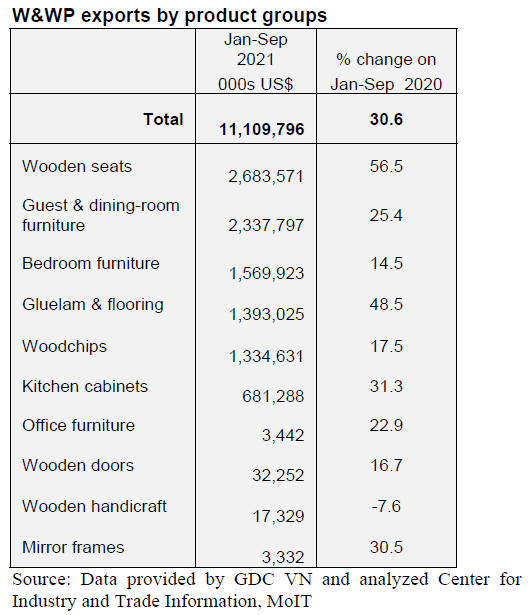
Export markets
In the first 9 months of 2021, the export turnover of
W&WPs still grew positively. The US continued as
leading the markets consuming US$6.7 billion up 41%
over the same period in 2020.
W&WP demand in the US usually increases sharply in the
last months of the year to meet the festive season demand
for wooden furniture and for the completion of
construction and housing projects. Therefore, the rapid
recovery of production is expected to accelerate Vietnam’s
W&WP exports to the US in the last months of 2021.
China was the second largest market taking US$1.1
billion, up 23% over the same period in 2020. The other
main markets are Japan (US$1 billion, up 11%); South
Korea (US$652.7 million, up 11%) and the EU (US$
446.9 million, up 22%).
The UK market is also important role consuming US$99.3
million in the first 9 months of the year and showing yearon-
year growth by 24%. Of great significance is the newly
concluded Vietnam- UK Free Trade Agreement
(UKVFTA) which benefits Vietnam’s W&WP exports to
UK through a zero duty preference.

Imports of padauk
According to customs statistics the average price of
padauk logs imported into Vietnam in the first 8 months of
2021 stood at US$433.4/cu.m CIF, up 17% over the same
period in 2020.
In particular the price of padauk logs imported from
Cameroon increased by 15% over the same period in 2020
to US$383.2/cu.m while the price of padauk logs imported
from Congo increased by 12% to US$445.8/cu.m; logs via
Hong Kong rose by 12% and were priced at US$283/cu.m
while Gabon padouk log imports rose 6% and were priced
at US$410.4/cu.m CIF.
In the first 8 months of 2021, the volume of padauk
imported from South Africa, Cambodia, Laos, Hong
Kong, Gabon, Mozambique increased over the same
period in 2020, while imports from Cameroon, Namibia,
Congo etc. dropped.

8. BRAZIL
Timber exported from Mato Grosso from
sustainably
managed forests
A large part of the Amazon is within Mato Grosso State.
Between August 2019 and July 2020 the area logged for
timber purposes in Mato Grosso was equivalent to the sum
of the area logged in the six other states in the Amazon
region. In the state of Mato Grosso there are 3.8 million
hectares under sustainable forest management in cutting
cycles from 25 to 35 years.
The industrial and commercial sector based on harvests
from natural forests in Mato Grosso is at the core the
economy in 44 municipalities generating around 90,000
direct and indirect jobs.
According to International Business Centre of the
Federation of Industries of Mato Grosso State
(CIN/FIEMT) an online platform ComexStat provided by
the Foreign Trade Secretariat (SECEX) sawnwood exports
grew 73% year on year in July this year and were worth
US$1.8 million.
According to Center for Timber Producers and Exporters
of Mato Grosso State (CIPEM) 98% of the timber
exported by the state comes from sustainable forest
management areas.
In related news, IBAMA suspended the issuance of
licenses for transport and storage of tropical timber
(Document of Forest Origin, DOF) for Mato Grosso in
March 2021.
The objective of the suspension was to allow the state
governor to integrate the state systems of forest
monitoring and control with the Federal system
SINAFLOR (National System for the Control of Origin of
Forest Product).
In August 2021 the state Secretariat for the Environmental
in Mato Grosso (SEMA/MT) confirmed that the
integration between the state systems and SINAFLOR was
completed. The next step will be implementation of
verifiable traceability.
Performance of the furniture sector in 2020
According to the Brazilian Furniture Industry Association
(ABIMÓVEL) and the Brazilian Trade and Investment
Promotion Agency (Apex-Brazil) production by the
furniture industry in the country declined slightly (-1.5%)
in 2020 compared to 2019, the most recent data available.
Given the negative effects of the pandemic on production
and trade in the first half of 2020 the data confirms a
significant recovery of the sector in the second half of
2020.
Production by the furniture sector in terms of number of
items suffered a retraction of approximately 7% between
2015 and 2020 caused by the Brazilian economic crisis in
2015/2016. However, over the same period there was a
21% increase in the value of production.
It is estimated that the country saw domestic furniture
consumption of approximately 424 million items in 2020
or, in value terms, around US$13 billion at factory prices.
Export update
In September 2021 Brazilian exports of wood-based
products (except pulp and paper) increased 36% in value
compared to September 2020, from US$283.2 million to
US$385.8 million.
Pine sawnwood exports grew 59% in value between
September 2020 (US$51.8 million) and September 2021
(US$82.2 million). In terms of volume exports fell slightly
over the same period, from 293,700 cu.m to 293,100 cu.m.
Tropical sawnwood exports fell 10% in volume from
39,700 cu.m in September 2020 to 35,900 cu.m in
September 2021. In value, exports declined 21% from
US$15.3 million to US$12.1 million, over the same
period.
Pine plywood exports saw a 20% increase in value in
September 2021 compared to September 2020, from
US$65.9 million to US$78.8 million. In volume, exports
dropped 32% over the same period, from 233,500 cu.m to
159,100 cu.m.
As for tropical plywood, exports increased in volume by
48% and in value by 30%, from 6,100 cu.m (US$2.3
million) in September 2020 to 9,000 cu.m (US$5.3
million) in September 2021.
As for wooden furniture exports increased from US$ 51.8
million in September 2020 to US$71.9 million in
September 2021, a 39% growth.
LEAF - funding for conservation
The nine states in the Amazon received approval from the
Ministry of the Environment to join the Lowering
Emissions by Accelerating Forest Finance (LEAF),
coordinated by Emergent, a North American non-profit
organisation. Specifically, the financing is aimed at
reducing deforestation and fires, to eliminate illegal
deforestation and working to a transition to a green
economy.
The State governors are negotiating an initial funding of
R$89 million to adapt the state structures for forest
inspection among other aims. Further funding would be
sought for payment for environmental services, reduced
forest fires, reduced deforestation and lower greenhouse
gas emissions.
See:
https://agenciapara.com.br/noticia/32316/
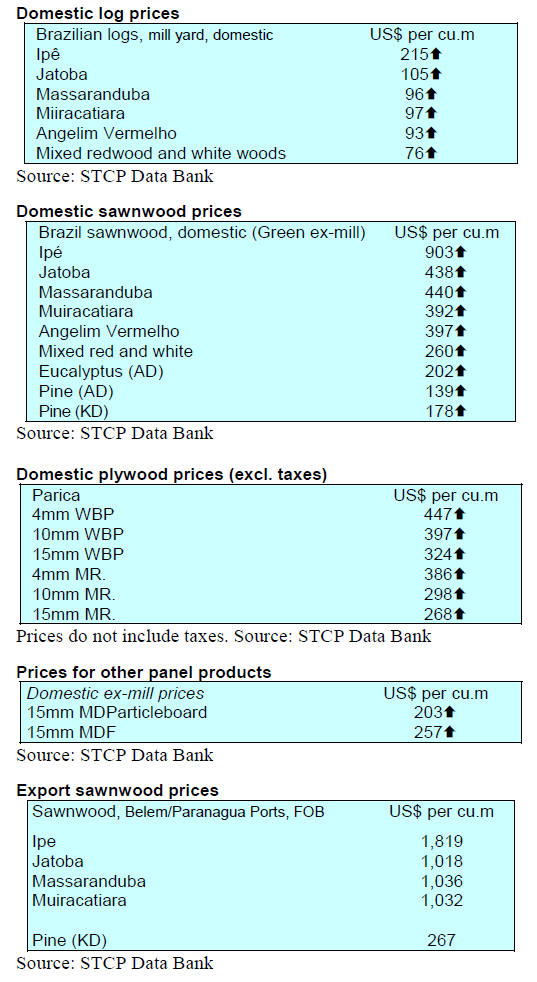
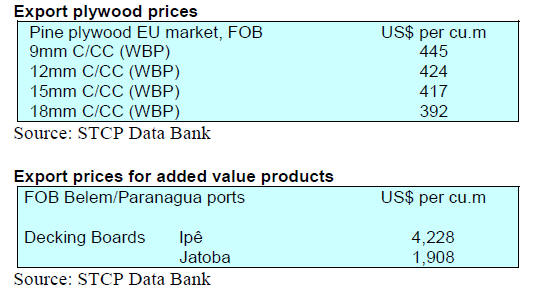
9. PERU
Composite board imports climbing
Peruvian imports of particleboard were valued at
US$112.1 million in the first 9 months of this year, a
record figure and as could be expected, a strong year-onyear
growth.
Ecuador was once again the main provider of composite
boards to Peru in the first nine months of 2021 with
shipments of US$48 million, a notable increase of 73%
(versus US$27.9 million in the same period last year).
Spain was the second ranked supplier at US$25.4 million
and an increase of 86% compared to the same period of
time in 2020.
Brazil, with a growth of 74%, was the third supplier
country with US$15.9 million; Chile followed with
US$14.3 million being the only one among the main
supplier countries that did not increase its exports to Peru
for the period January-September of this year 2021.
Training in forest fire prevention
In October the National Forest and Wildlife Service
(SERFOR) began training regional and local authorities
from Cajamarca, Pasco, Junín, Ucayali and Huánuco on
how to prevent and respond to forest fires. Participants
will develop forest fire prevention using satellite
technology and will promote inter-institutional
coordination for the implementation of strategies.
The project "Prevention and response to forest fires in
tropical forests and forest plantations in Peru" is funded by
the International Tropical Timber Organization (ITTO)
and involves a series of capacity-building events for
various authorities and key representatives of public
institutions and private companies in Cajamarca, Pasco,
Huánuco, Ucayali and Junín.
Strategy to promote forest plantations approved
SERFOR has approved the ‘Strategy for the Promotion of
Commercial Forest Plantations 2021 - 2050’ (EPPFC) the
main objective of which is to increase production and
profitability of commercial forest plantations in the
country.
The strategy includes providing appropriate conditions for
investment, improving production and processing and
marketing. Consideration is also given to the technical and
managerial capacities of those involved.
It is estimated that by 2030 there would be an annual
requirement of 144,116 hectares of land for plantations to
complement the annual production of natural forests and
satisfy domestic demand for wood products.
SERFOR identified that in the Amazon, coast and
mountains there are just over seven million hectares of
potential land for commercial forest plantations. The use
of these areas could generate a significant supply of forest
resources oriented to satisfy the growing national and
international demand and in turn provide jobs and raise the
GDP.
Satellite monitoring to halt deforestation
The Ucayali State authorities are using the ‘Platform for
Satellite Monitoring of Impacts to the Forest Heritage’
developed by SERFOR to monitor and control
deforestation.
SERFOR coordinates efforts with national, regional and
local entities to reduce the impact on the country’s natural
heritage and provides this important satellite monitoring
tool. This satellite tool analyzes information from high
resolution satellite images and has an early warning
system to alert authorities of forest incursions.

